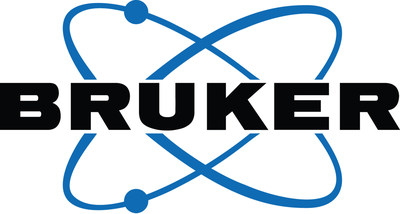InNEOvations™ at ENC 2018 Enable Deeper Insights into the Structure, Dynamics and Function of Structured, Unstructured and Membrane Proteins, and of Advanced Materials
ORLANDO, Fla., April 30, 2018 /PRNewswire/ — At the 59th Experimental Nuclear Magnetic Resonance Conference (www.enc-conference.org), Bruker announced new technologies and products for NMR spectroscopy. These innovations will enhance advanced analysis in academic, pharmaceutical and industrial research markets, and enable new discoveries in structural and cell biology.
Frank Laukien, Ph.D., President and CEO of Bruker Corporation, stated: “We continue to develop novel enabling technologies and products, increasing the utility of NMR even further, in order to give our customers better tools for their chemistry, molecular biology and advanced materials research. High-field NMR, and particularly the emerging GigaHertz NMR tools, offer unique scientific capabilities for investigation structure, dynamics and ultimately function of globular proteins, intrinsically disordered proteins (IDPs), membrane proteins and aggregates implicated in neurodegenerative diseases.”
Bruker’s InNEOvations™ at ENC 2018 include:
The compact AVANCE™ NEO NanoBay now extends the successful line of NEO consoles with dual-channel transmit & dual receive capabilities to routine 300 and 400 MHz NMR. With the novel NEO ‘transceiver’ architecture, each NMR channel in the AVANCE NEO is a functional spectrometer, thereby enabling a new generation of multi-receive experiments. The small footprint NanoBay supports a wide range of applications, including chemistry research and analysis, high-throughput screening for applied markets and quality control, and to structure verification in drug discovery.

Novel experiments on the AVANCE NEO include the UTOPIA-NMR experiments. “I am very pleased to take advantage of the Avance NEO technology,” commented Professor Gerhard Wagner of Harvard Medical School, “to develop the groundbreaking UTOPIA-NMR experiments for the study of large, structured and (partially) unstructured proteins. We introduced the concept of unified time-optimized interleaved acquisition (UTOPIA) NMR, which activates the otherwise non-used polarization and information content distributed on low-gamma nuclei, without disturbing conventional magnetization transfer pathways. UTOPIA-NMR can reduce the experiment time or deliver additional information during the acquisition of a conventional set of experiments, adding new insights into challenging proteins.”
A novel 1.0 GHz NMR TXO CryoProbe™ now also permits 15N direct detection on GigaHertz NMR spectrometers. Prof. Haribabu Arthanari of the Dana-Farber Cancer Institute at Harvard Medical School stated: “New CryoProbes coupled with novel NMR methods that harness the slow relaxation advantages of low-gamma nuclei (15N & 13C) offer great promise for investigating even larger molecular weight proteins and IDPs by NMR. Acquiring high sensitivity 15N detection data on 1.0 GHz NMR is a great opportunity to further enable the investigation of critical interactions between transcription factors and the general transcriptional machinery, and to decipher the secrets of the disordered part of the human proteome sometimes referred to as the ‘Dark Proteome’.”
The Biosolids CryoProbe™ is the latest technology introduction of the high-sensitivity CryoProbe series. Biosolids CryoProbes now allow the investigation of various biological solids, such as membrane proteins or disease aggregates at physiological temperatures, with a three-fold boost in sensitivity. After the extremely successful adoption of cryogenically cooled NMR probes for liquids NMR and MR imaging, the Biosolids CryoProbe represents the 3rd frontier for this breakthrough technology. A first Solids CryoProbe has been successfully installed with an industrial customer for materials research, and structural biology results with a novel 600 MHz 3.2 mm HCN triple-resonance CP-MAS Biosolids CryoProbe are shown at ENC 2018. The probes, designed for standard-bore magnets, are compatible with the CryoPlatform™. They can reach magic angle spinning (MAS) rates of up to 20 kHz.
Bruker’s line of Dynamic Nuclear Polarization (DNP) NMR systems has now expanded to include a 263 GHz klystron microwave source for DNP NMR for materials research at 400 MHz, and a 593 GHz gyrotron microwave source for high-field 900 MHz DNP NMR for biological research. The 263 GHz klystron offers DNP at lower cost, and with reduced footprint and facility requirements. Bruker delivered the first 593 GHz DNP system in October 2017 to EPFL in Lausanne, Switzerland. Development included a new gyrotron tube design for 593 GHz, using a 11.7 T gyrotron magnet, custom microwave transmission line, and new 900 MHz low-temperature MAS DNP probes.
For more information on Bruker at ENC 2018, please visit www.bruker.com/events/enc.
About Bruker Corporation (NASDAQ: BRKR)
Bruker enables scientists to make breakthrough discoveries and develop new applications that improve the quality of human life. Bruker’s high-performance scientific instruments and high-value analytical and diagnostic solutions enable scientists to explore life and materials at molecular, cellular and microscopic levels. In close cooperation with our customers, Bruker is enabling innovation, improved productivity and customer success in life science research, in applied and pharma applications, in microscopy and nanoanalysis, in industrial applications, as well as in cell biology, preclinical imaging, phenomics and proteomics, microbiology and molecular diagnostics. For more information, please visit: www.bruker.com.
|
Media Contact: |
Investor Contact: |
|
Thorsten Thiel, Ph.D. |
Miroslava Minkova |
|
VP of Group Marketing |
Head of Investor Relations |
|
Bruker BioSpin Group |
Bruker Corporation |
|
T: +49 (721) 5161–6500 |
T: +1 (978) 663-3660, ext. 1479 |

![]() View original content with multimedia:http://www.prnewswire.com/news-releases/bruker-introduces-new-nmr-technologies-and-research-products-300638561.html
View original content with multimedia:http://www.prnewswire.com/news-releases/bruker-introduces-new-nmr-technologies-and-research-products-300638561.html
SOURCE Bruker Corporation





